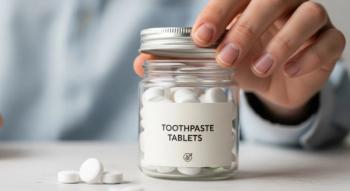
Advanced Glycation End Products Have Strong Correlation to Breast Cancer
A potential correlation between processed food and breast cancer has been discovered.
There may be a link between high levels of advanced glycation end products (AGEs) and breast cancer risk, according to a new study published in Cancer Prevention Research.
AGEs are proteins and lipids that go through a chemical alternation called glycation when exposed to sugars. According to the press release, this process is naturally occurring. However, processed foods and foods cooked at high temperatures are extremely high in AGEs, which can lead to dangerous overabundance of them when those foods are consumed in high quantities. Additionally, AGEs have been shown to be involved in many chronic diseases.
The study was composed of over 78,000 women between the ages of 55 and 74 who were cancer free at the start of the study. After 11.5 years, 1592 women were diagnosed with breast cancer. According to the press release, the study was part of a larger decade-long prostate cancer study sponsored by the National Cancer Institute.
Increased AEG intake via the diet was associated with a greater risk of in situ and hormone receptor positive breast cancers, according to the press release. In order to avoid supporting this association, the researchers suggested individuals should make lifestyle changes and avoid processed foods. Additionally, they mentioned that individuals should also avoid the highest AGE-inducing cooking methods which include frying, grilling, and broiling.
"AGEs build up in a cumulative way. Fats, sugars, everything that is bad for you leads to the accumulation of AGEs. One of our goals at Hollings is to reach out to the community to encourage the public to make healthier choices. Just making small changes in your diet can have a big effect," said David Turner, PhD, the study’s principle investigator and professor at Medical University of South Carolina, in the press release.
The study of AGEs is expected to become more popular with the advent of the AGE reader, which is made by Diagnostics. According to the press release, the reader is a noninvasive device that rests on the patient’s forearm. It uses light at certain wavelength to excite AGE autofluorescence in the skin. This means the higher the glow, the more AGEs are present in the skin. The device has already established a connection between AGEs and type 2 diabetes, cardiovascular disease, and mortality. According to the press release, it is now being used to establish a link between AGEs and cancer as well.
Reference:
Study links elevated levels of advanced glycation end-products (AGEs) with breast cancer risk (News Release), June 12, 2020, Charleston, SC, EurekAlert!, Accessed, July 6, 2020
Newsletter
Stay informed on drug updates, treatment guidelines, and pharmacy practice trends—subscribe to Pharmacy Times for weekly clinical insights.













































































































































































































